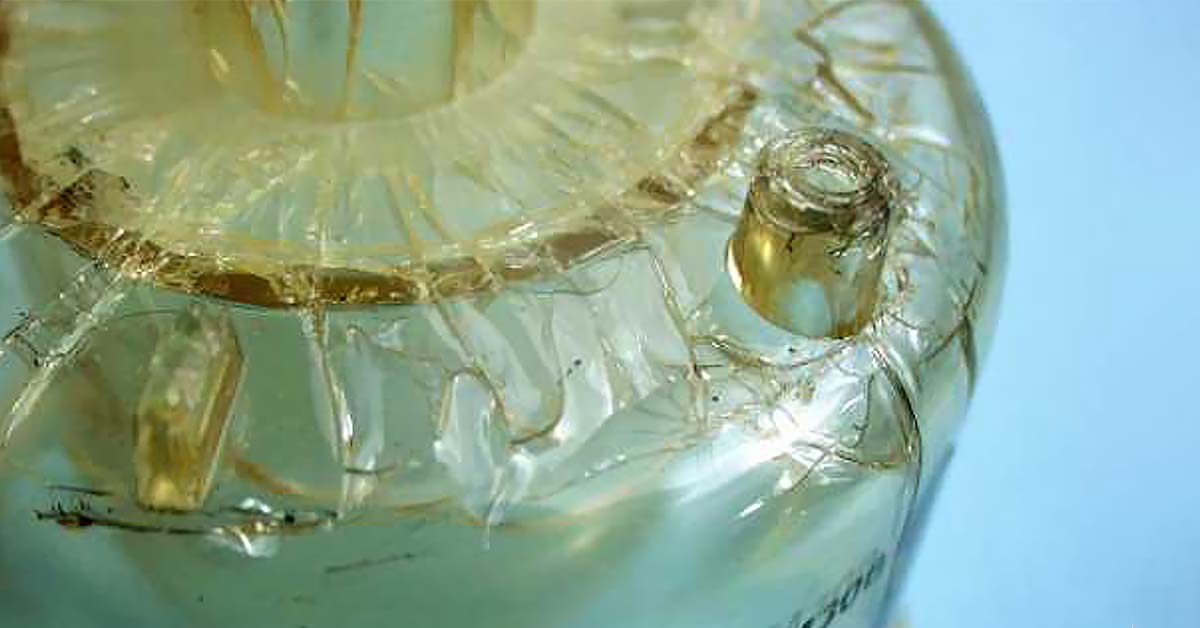
Have you ever noticed transparent plastic objects marked by internal cracks despite never having been used? It's likely that the material has been affected by stress cracking, which occurs when internal stresses and, often, a liquid permeate the molecular structure, leading to crack formation.
Stress cracking is challenging to prevent and requires careful evaluation of exposure scenarios. It primarily affects amorphous polymers like polycarbonate but can also occur in semi-crystalline materials such as polyethylene or polyamides. Mechanical failure and crack formation require the simultaneous presence of internal or external stresses and a chemical that penetrates the polymer structure, compromising secondary bonds between macromolecular chains and causing brittle failure. This phenomenon occurs gradually, even months apart, and is exacerbated by high temperature, reagent concentration, and fatigue.
Preventing stress cracking requires proper polymer selection, careful evaluation of chemicals in the work environment, and proper design of fabrications that avoid geometries or processing that promote and accelerate the structural problems discussed here.
Want to discover the secrets of environmental stress cracking?
Check out our new guide polymer chemical resistance: